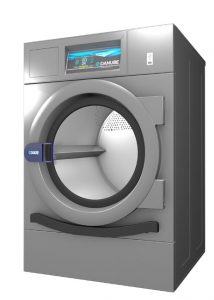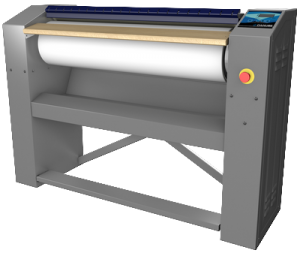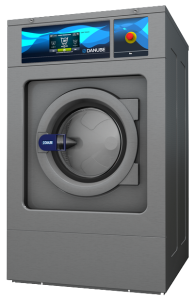Industries such as hospitality and healthcare are tremendously dependent on the commercial laundry equipment. Here’s how the Internet of Things (IoT) can help you operate even more smoothly.
PROVIDING BETTER VISIBILITY FROM ANYWHERE
Many professionals who rely on commercial laundry equipment know it may only be a small part of the overall operations, although an important one. For example, a professional sports stadium may have a commercial laundry facility, but many other activities go on at that location, too. Thus, someone tasked with laundering uniforms may have other duties that pull them away from the laundry area.
The convenient thing about a IOT connected commercial and industrial washing machines and tumble dryers is that they connect to the cloud. A person overseeing the laundering can monitor each load’s progress despite not being in the same room.
That additional visibility extends to customers, too. For example, coin or cashless operated commercial laundry equipment installed on a university campus with IOT connectivity. People are reminded to take their clothes out at the end of a cycle, thereby freeing more machines up for other users. They can also see their complete laundry usage history. That helps them spot patterns and potentially decide to wait longer between loads to avoid wasting time and energy.
Workers can then plan to maximise productivity on certain days based on things such as the number of clients to serve or the percentage of overall machines in use. In industries such as construction or manufacturing that regularly use heavy equipment, IOT connected laundry equipment has spurred a change from reactive to proactive maintenance. It could do the same in a commercial laundry facility by alerting people to the need for servicing before any failure occurs.
ALLOWING BETTER OVERSIGHT OF THE PREMISES
Many commercial laundry machines operate entirely unstaffed. However, IoT sensors allow authorised parties to receive alerts when things go wrong. They can then intervene themselves or contact service professionals to help.
REMOVING CHALLENGES FOR ON-SITE PERSONNEL
You can probably remember a few times in life where you’ve had to use a coin-operated laundrette and you ran out of coins and went to see the laundrette attendant, begging them to exchange your notes for the necessary coins. Many such facilities now let people load money onto laundry cards and use those to operate the machines.
However, such arrangements still involve exchanging cash. Another downside is that it can make criminals target laundrettes for robberies, especially since they’re often open all the time and may only have one worker staffing them on a given shift. However, the IoT can reduce or eliminate these issues.
For example, Aventus Group offers a cashless laundry experience where people pay for and reserve washers via an app. That setup removes the hassles of carrying and handling money, catering to customers and laundrette workers alike.
The IoT can also help laundrette workers see helpful usage patterns. Perhaps data shows machines are so popular that people must wait a while to use them. That information could help justify investing in more of them to meet demand.
HELPING care homes MAINTAIN HIGH STANDARDS
Applying the IOT to commercial laundry equipment helps company representatives maintain high standards. Consider the example of a IOT connected washer used to clean soiled residents’ clothes. Now you can download temperature validation reports from the equipment’s database ready for any audits or inspections. Most models have dosing sensors that confirm the exact amount of detergent or other products used during a cycle. Such features help workers verify that they use enough products to get the items clean without being wasteful and reducing any cross-infection risks.
In another instance, perhaps a customer wants to limit the time a delicate garment spends in the tumble dryer. A IOT connected tumble dryer setting can stop the cycle at the precise moment all the moisture is removed.
The data collected by IoT connected commercial equipment also comes in handy if a customer raises a concern about the condition of clothes after they’re washed or dried. If someone says they don’t seem as clean or feel as soft as usual, someone at a commercial laundry facility could look back at a machine’s data to ensure the cycles followed a customer’s specifications.
Conversely, if several people make similar complaints in a relatively short period, the IoT data may show they all relate to a single machine. That makes it easier to investigate deeper into the matter by seeing what’s wrong and taking the necessary steps to resolve the problem and keep customers happy.
IOT LAUNDRY MACHINES MAKE AN ESSENTIAL TASK EASIER
Most people can recall times when they’ve done loads of laundry and noticed that the garments did not come out as expected. It’s particularly important to reduce those instances in commercial laundry businesses since customers expect the equipment to work reliably and to their satisfaction. Whether company leaders choose smart washers, dryers or both, such connected equipment creates mutually beneficial.
IOT commercial laundry equipment helps you reduce your carbon footprint.
When you require an engineer to attend your site to repair a broken down machine, adjust your chemical usage or even to update or add a program they will most likely attend in a petrol or diesel vehicle. IOT connected laundry equipment allows engineers to log-in remotely and carry out a large percentage of these tasks without burning unnecessary fuel.







































